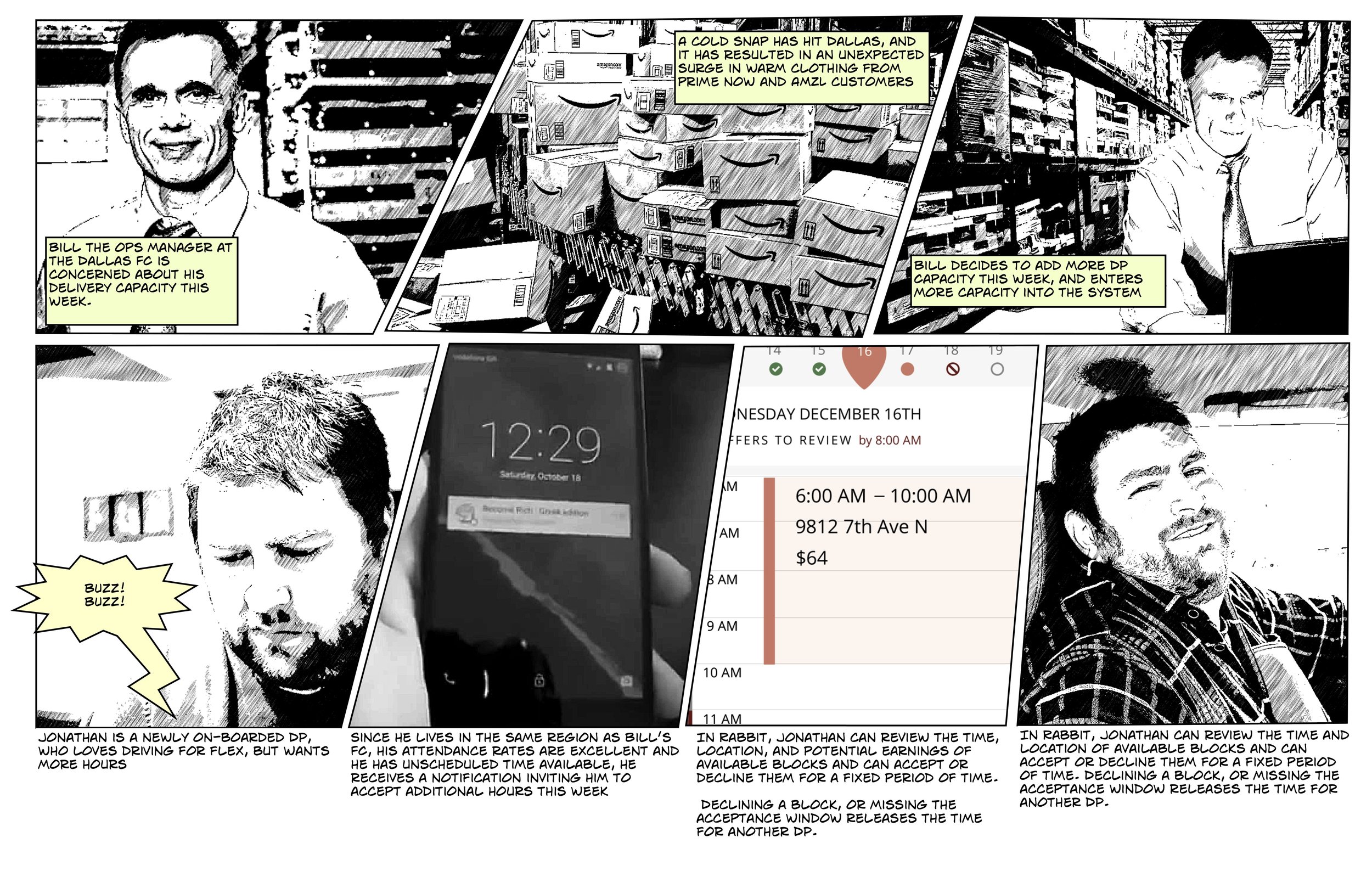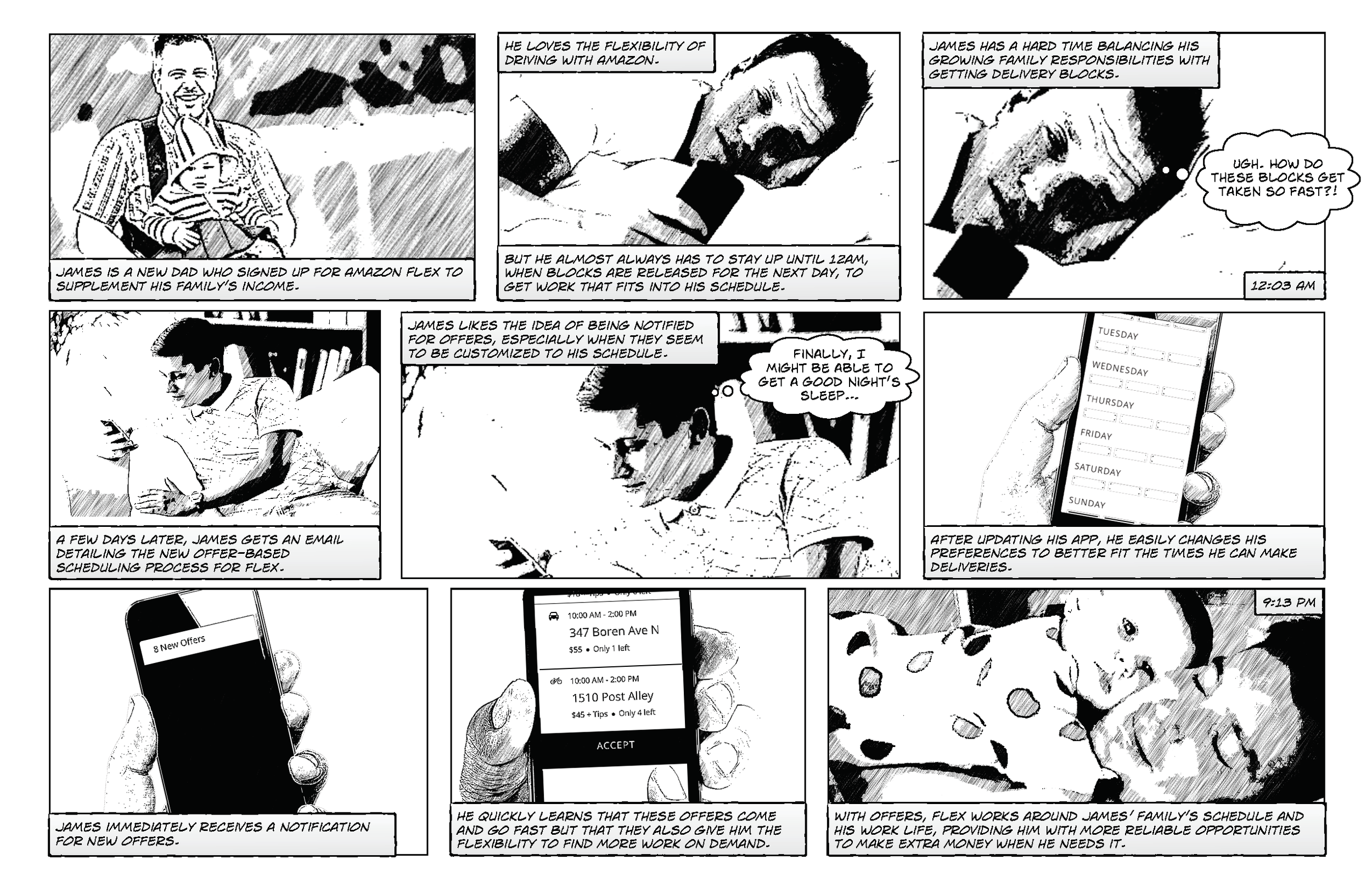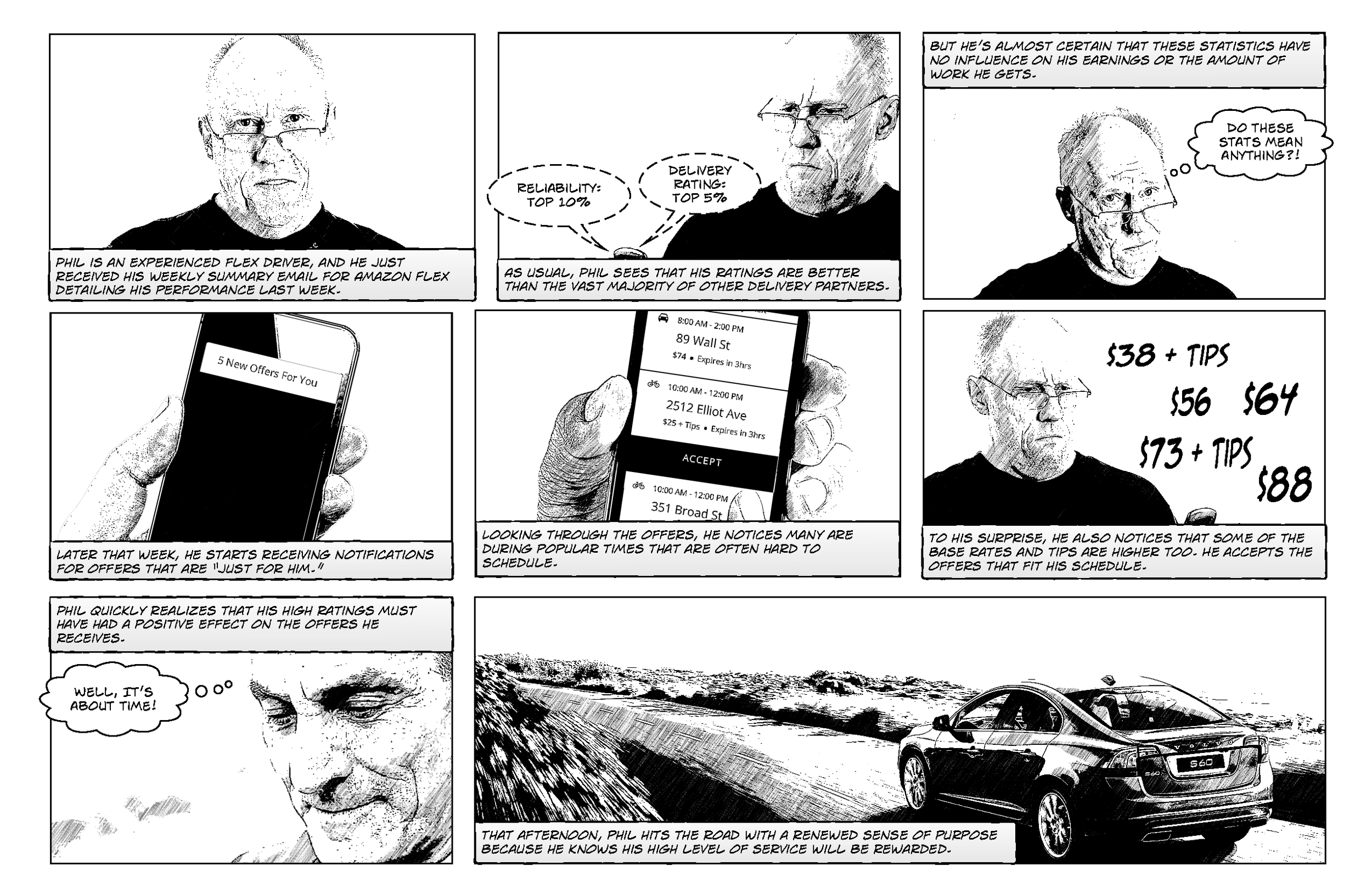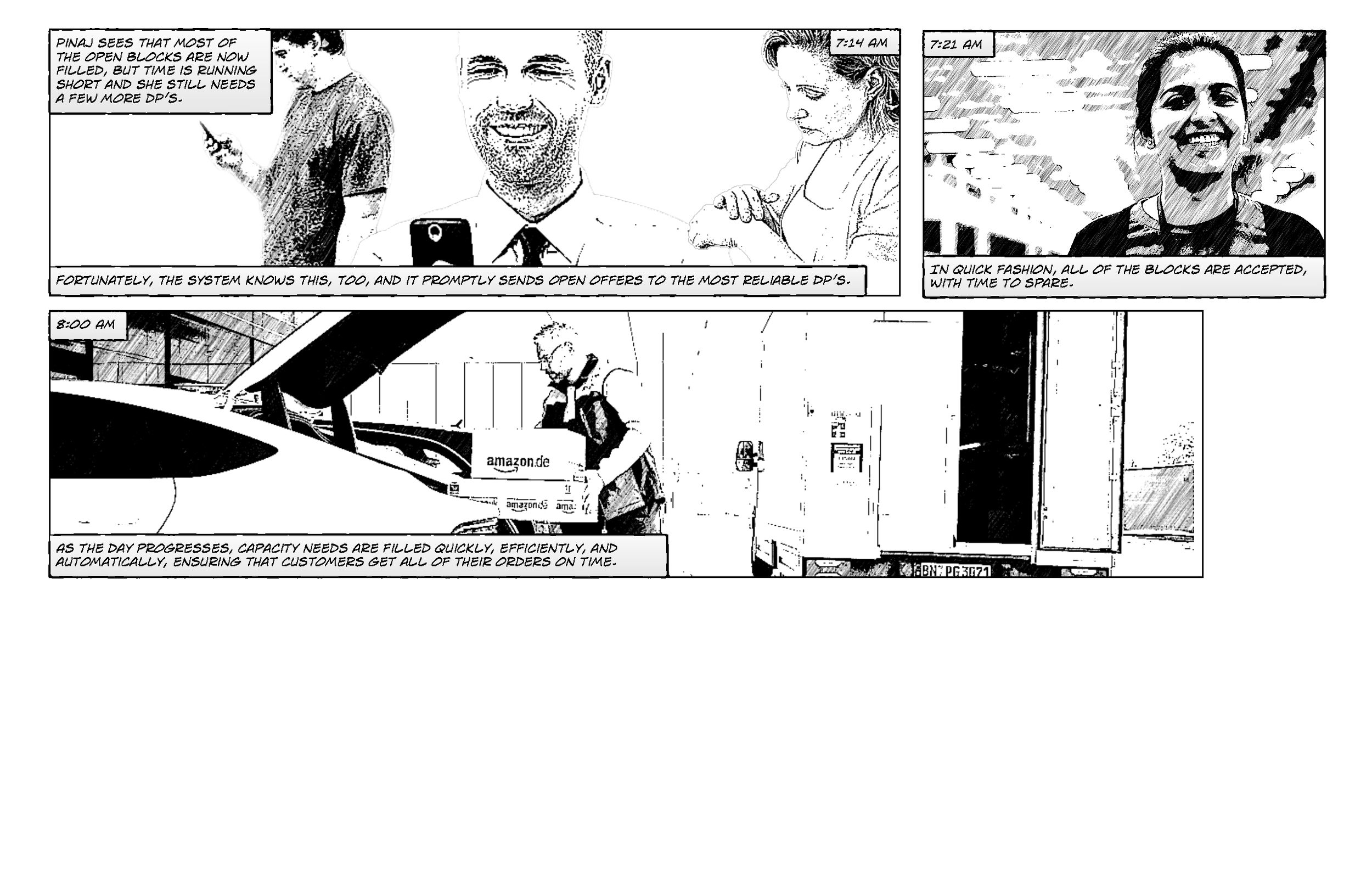Solving an $11 billion dollar economic problem
Amazon Flex - Pricing and Scheduling UX
Amazon Flex is the crowd-sourced driving program that powers a significant portion of Amazon's "last mile" delivery globally.
Like "Uber for packages" Flex drivers are independent contractors, but many of the comparisons between these programs stop there.
One of the most significant problems solved by the team was scheduling reliable drivers who would not game the gaps in the system and defraud Amazon. From the driver perspective, scheduling and payments were both miserable experiences.
Demand for work was always higher than supply, and a small minority of drivers had figured out how to grab the majority of work whenever it came available. Drivers were habitually undependable because they were scheduled without any notification based on an availability they set deep within the app. Similarly, payments for the "blocks" of time drivers worked were utterly opaque. Amazon did not cheat drivers, but for reasons related to costs, and significant differences in how Amazon funds different delivery programs (tip supported vs. fixed price), it was impossible for drivers to account for their pay accurately.
I solved the problem by pushing for a new model for scheduling work and payment that is simultaneously more transparent about earnings expectations, and more equitable about work assignment. The new system also reduced costs, increased efficiency, dependability, and forecasting across the by rewarding the best performing drivers with preferred placements and providing the right of first refusal on "surging" work offerings when demand for drivers was high...and they said my Political Science degree would never be useful!
The significant change in the system was to shift the driver's thinking away from an hourly accounting for driving, but to a block-based system that covered multiple hours. The block was the atomic unit of work, and earnings estimates (whether at a fixed rate or including tips. The work offers would evolve over phases of the engagement, from the unaccepted offer all the way through to the final settlement and deposit of funds from a block to the driver's account. Based on demand, work offers are algorithmically sent to drivers and dynamically surged as necessary.
















